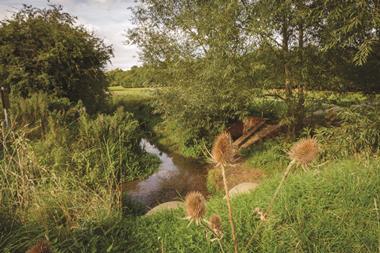Editor: ESG was a corporate buzzword long before Covid-19. But the possibility of translating this into a successful investment was still viewed by some with a degree of scepticism.

In the wake of the pandemic, ESG has taken centre stage in real estate. Having previously brought to mind costly outlays, unknown returns and reporting burdens, investors now pay close attention to the opportunities ESG affords and the link between ESG performance, business continuity and financial return.
But the real opportunities could lie beyond the new, ‘sparkly’ ESG stock. Many new buildings are already being designed and built in a sustainable way, so ‘greenifying’ existing grade A assets will undoubtedly involve less effort and cost. Although this might look like the safer option, competition for such buildings is set to intensify.
In turn, the price for grade A stock will no doubt rise at an expedited rate. While grade B buildings, with deteriorating structures, sub-par locations and often poor efficiency ratings might not seem an obvious option, the potential they offer cannot be ignored.
Without redevelopment or significant refurbishment, rent expectations for grade B properties will reduce and the gap between yields and capital values will quickly widen.
Therefore a real opportunity arises for those willing to put in some elbow grease and redevelop cheaper grade B stock into attractive, ESG-compliant assets.
As occupier expectations rise for space that supports physical and mental wellbeing and legislative requirements tighten (both to disclose ESG data and penalise energy inefficiency), the informed investor should look to future-proof their portfolios while still maximising their returns.
Paying some attention to the ugly duckling of the property world may well be one way to achieve that as well as supporting the regeneration of a greener UK economy.
Hayley Wilson, Senior Associate, Farrer & Co
































No comments yet